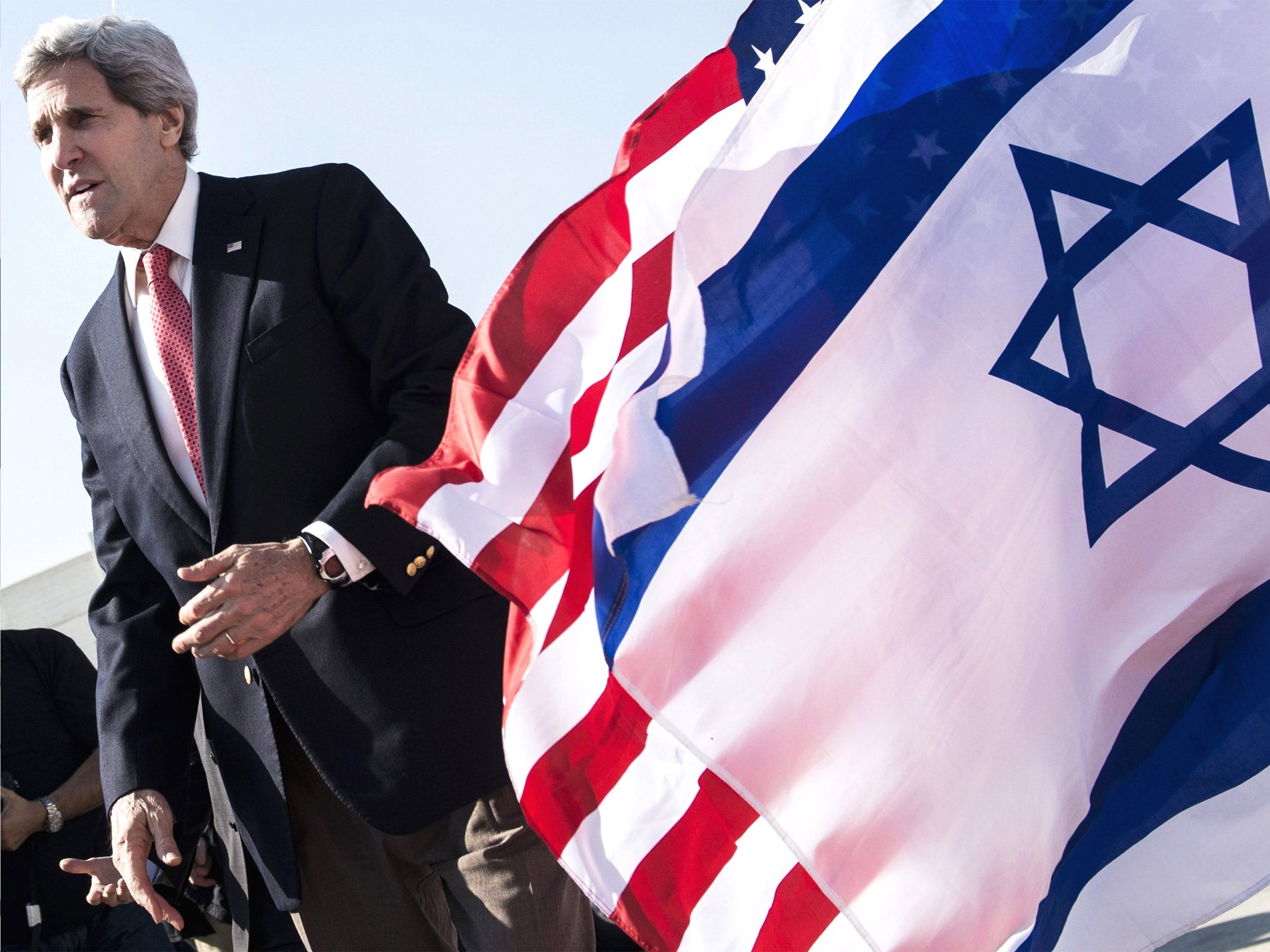Part broker, part bulldozer: John Kerry’s quest for Middle East peace is about steel as much as soft soap
Currently into his 10th round of shuttle diplomacy, the United States Secretary of State knows the process demands very particular skills

Your support helps us to tell the story
From reproductive rights to climate change to Big Tech, The Independent is on the ground when the story is developing. Whether it's investigating the financials of Elon Musk's pro-Trump PAC or producing our latest documentary, 'The A Word', which shines a light on the American women fighting for reproductive rights, we know how important it is to parse out the facts from the messaging.
At such a critical moment in US history, we need reporters on the ground. Your donation allows us to keep sending journalists to speak to both sides of the story.
The Independent is trusted by Americans across the entire political spectrum. And unlike many other quality news outlets, we choose not to lock Americans out of our reporting and analysis with paywalls. We believe quality journalism should be available to everyone, paid for by those who can afford it.
Your support makes all the difference.US Secretary of State John Kerry is trying – doggedly, relentlessly, exhaustingly – to make peace in the Middle East. And as he has shown over the past week on this, his 10th round of shuttle diplomacy to the region, he has become part broker, part bulldozer.
In hours of meetings with Israel’s Benjamin Netanyahu and Palestinian Authority President Mahmoud Abbas, Mr Kerry laid out what he calls a framework for a peace deal that would establish an independent Palestinian state and end the conflict. He has tried to get each side to drop petty politicking and look to history. And he has made pit stops across the region – to Jordan and Saudi Arabia – to rally support for the peace project.
Mr Kerry has bet that a combination of attractive proposals for each side, support and pressure from the United States and other nations and the sheer force of his will can help make a deal that eluded past Middle East leaders and US envoys.
But six months into the process, there are doubts. Mr Netanyahu and Mr Abbas have yet to meet face to face since Kerry wheedled and pushed them to renew stalled negotiations. Teams of negotiators have met about 20 times, keeping at it in the face of public frustration and finger-pointing. With the stated aim of a deal by the end of April, it’s crunch time – a reality the secretary of state is trying to impress on others. “Now is not the time to get trapped in the sort of up and down of the day-to-day challenges,” Mr Kerry said. “This does not lend itself to a daily tick-tock. What we need to do is lift our sights and look ahead.”
The latest trip began, not by accident, on New Year’s Day. Unless talks fall apart, Mr Kerry is expected to shuttle repeatedly over the next four or more months in an all-out drive to complete the deal. The framework, if Mr Kerry can sell it, would be a significant step. It is intended to be a detailed architecture that addresses the biggest obstacles to peace, including borders of the future Palestine and the jurisdiction of disputed Jerusalem.
“Once they have a shared vision of what that will look like, then it will become easier to finalise the details,” a senior official said. Mr Kerry and others have both become tangled in terminology and the long, troubled history of failed Israeli-Palestinian peace making. The Americans are trying to describe the framework idea without sending signals that this initial agreement would be a substitute for full peace.
Although it would be a placeholder or interim agreement on the way to the final deal, US negotiators don’t want to call it that. In the freighted terminology of the Middle East, an “interim agreement” connotes failure and invites Palestinian scepticism that they will be asked to settle for something less than full sovereignty.
“I want to reiterate: We are not working on an interim agreement,” Mr Kerry said. “We are working on a framework for negotiations that will guide and create the clear, detailed, accepted road map.”
Join our commenting forum
Join thought-provoking conversations, follow other Independent readers and see their replies
Comments